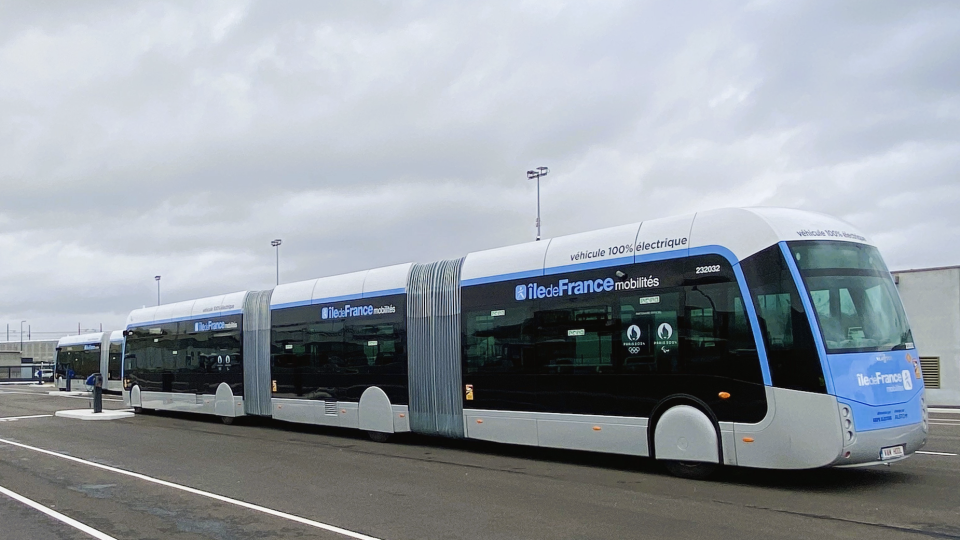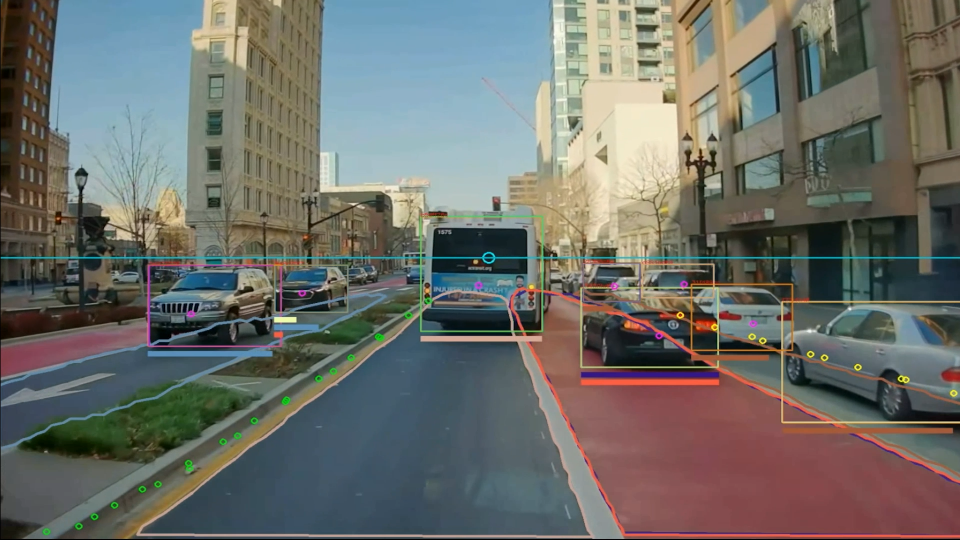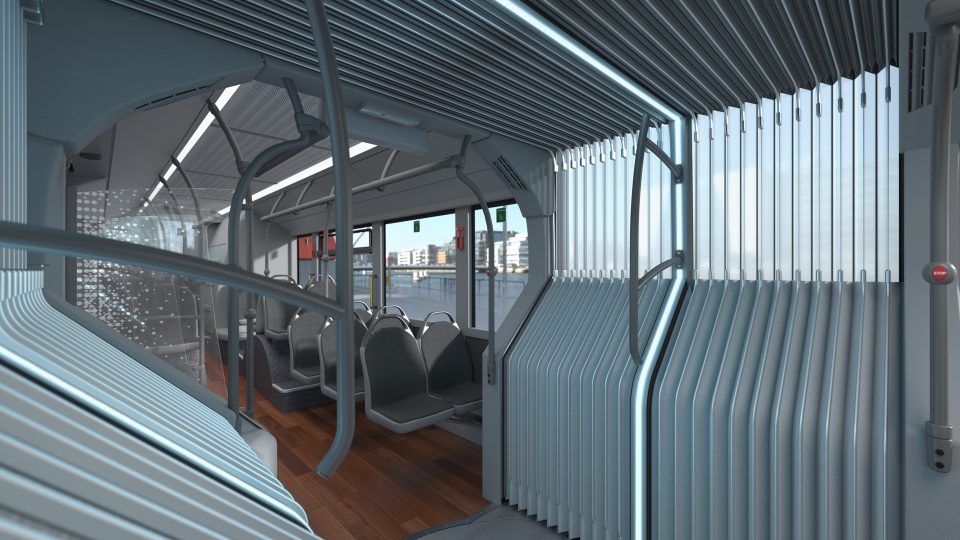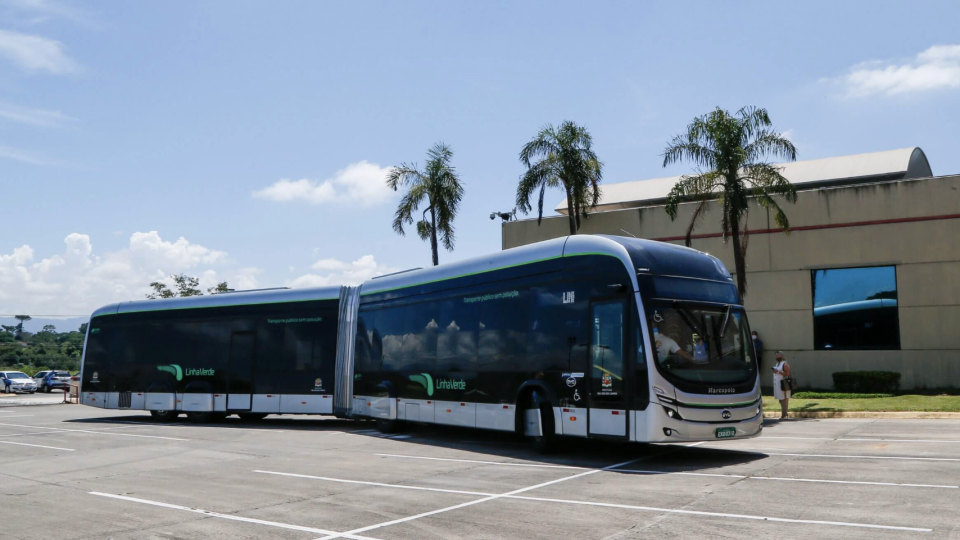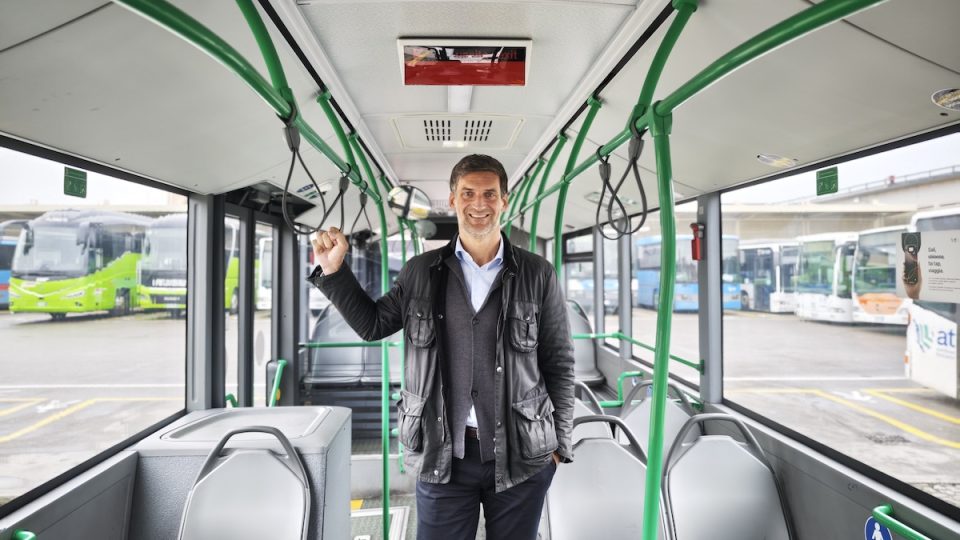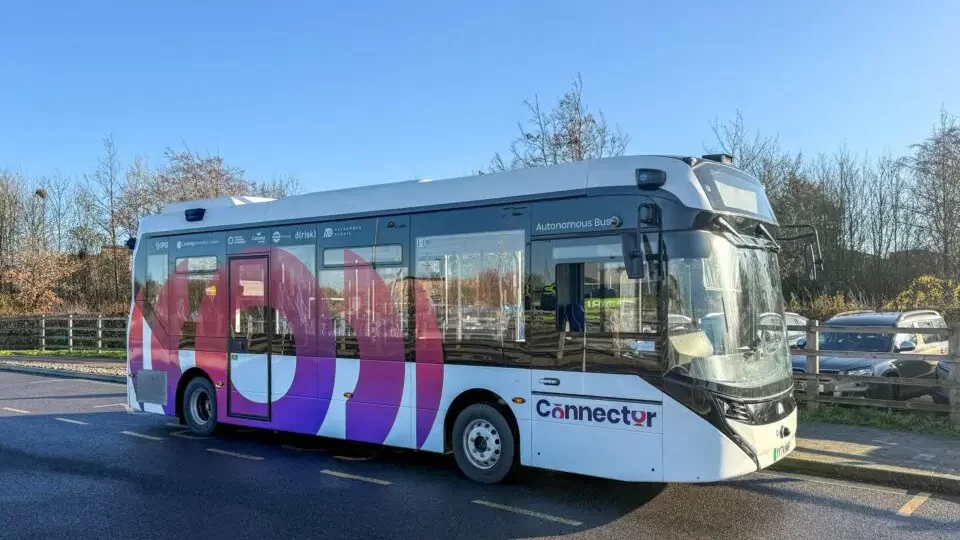Electrification, fundings issues, the bet on autonomous driving: an interview with BVG’s Daniel Hesse
Electrification, infrastructure upgrades, and the introduction of autonomous driving are key challenges for public transport operators across Europe. BVG, Berlin’s transport company, is no exception. Resource constraints, evolving regulations, and the need for long-term planning are shaping the pace and scope of this transition. Daniel Hesse, Head of Technology and Innovation and currently also leading […]

Electrification, infrastructure upgrades, and the introduction of autonomous driving are key challenges for public transport operators across Europe. BVG, Berlin’s transport company, is no exception. Resource constraints, evolving regulations, and the need for long-term planning are shaping the pace and scope of this transition.
Daniel Hesse, Head of Technology and Innovation and currently also leading the bus division, discusses the current status, the strategies and the main challenges of BVG’s fleet transition. In this interview, held at Mobility Move 2025, he reflects on funding, depot development, and the role of automation in shaping future operations.
The first part of our electrification program led us to deploy some 230 e-buses in three depots which are partially electrified. We are planning to build two new depots fully electrified from the very beginning. As of today, roughly 15 percent of our fleet is electrified. Due to the resource shortage, we are now focusing on building the two new depots first, then the electrification of existing depots, but we know that we will need time. The issues are: resource capacity and complexity being higher than expected.
Daniel Hesse, Head of Technology and Innovation, BVG
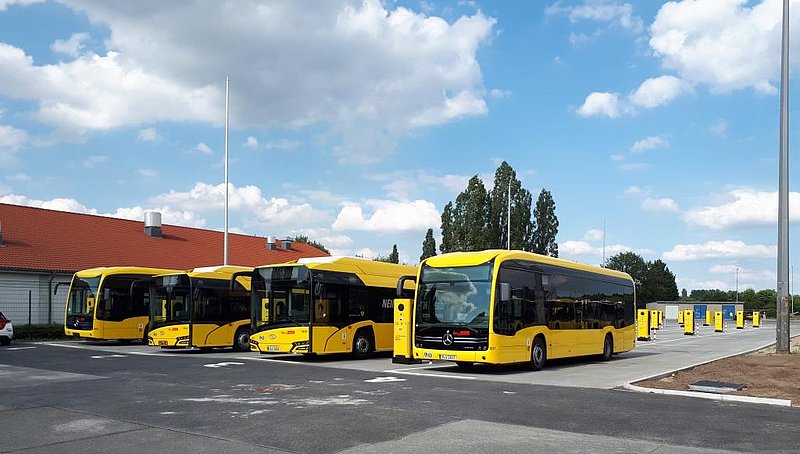
Daniel Hesse, BVG 2030 target and related constrains
Let’s start with your job position, Head of Technology and Innovation. What does it involves?
I am temporarily in charge of the bus division and I’m heading the electrification fleet project. There are many employees from the bus, infrastructure, IT, and purchasing divisions which are dealing with this topic.
BVG declared plans, before the change in the funding landscape with half of Federal funding removed, to convert its entire fleet to electric drives by 2030, due to the target set by the Senate of Berlin. Reportedly, such plans have been softened and HVO included in plans as a transition fuel…
I wouldn’t say ‘softened’ as the legislation in Berlin says that from 2030 only so called “alternative drive buses” should be procured for public transport. We had agreed with our transport authority that we would electrify our fleet as it made the most sense in our case. The thing is that we have to do a lot of transformation in our existing depots and build two new depots. And refurbishing depots is something much harder than we thought. We have to introduce, for instance, new water management systems required by fire protection regulations. The key point is that our latest depot is 60 years old.
Long story short, looking at the resources we have, we haven’t managed to get to the point that we have all the people that we would need to do so many things in parallel. The first part of our electrification program led us to deploy some 230 e-buses in three depots which are partially electrified. We are planning to build two new depots fully electrified from the very beginning. As of today, roughly 15 percent of our fleet is electrified. Due to the resource shortage, we are now focusing on building the two new depots first, then the electrification of existing depots, but we know that we will need time. The issues are: resource capacity and complexity being higher than expected.
For safety’s sake, in order to provide reliable operations, we believe the best option is to charge in both ways. We have larger batteries on our buses compared to the ones we’d use for just opportunity-charged buses. Plus, using pantograph, automation processes can be put in place. That’s why we are building our depots in a way that we can use pantograph technology in place of plug-in charging in a future-proof approach.
Daniel Hesse, Head of Technology and Innovation, BVG
The role of fundings for electrification of transit
In late 2024, the VDV stated that for every 100 zero-emission buses to be tendered according to plans, only 42 are set to be effectively procured following the halt of Federal subsidies. Does this proportion also apply to BVG’s fleet expansion plans? What is, as of today, the funding landscape available for zero-emission buses in Germany?
We have secured funding that will lead us to deploy 500 e-buses by 2027 — it’s about 30 percent of our fleet. These buses have already been tendered, we did a framework contract. We still haven’t secured full funding for the remaining part of the electrification, although there’s the commitment of the federal state of Berlin to fulfill it, as it’s their aim as well. But we cannot say how fast it will be, as funding is not secured yet. However, even if we already had the funding, we wouldn’t be faster for the reasons I explained before.
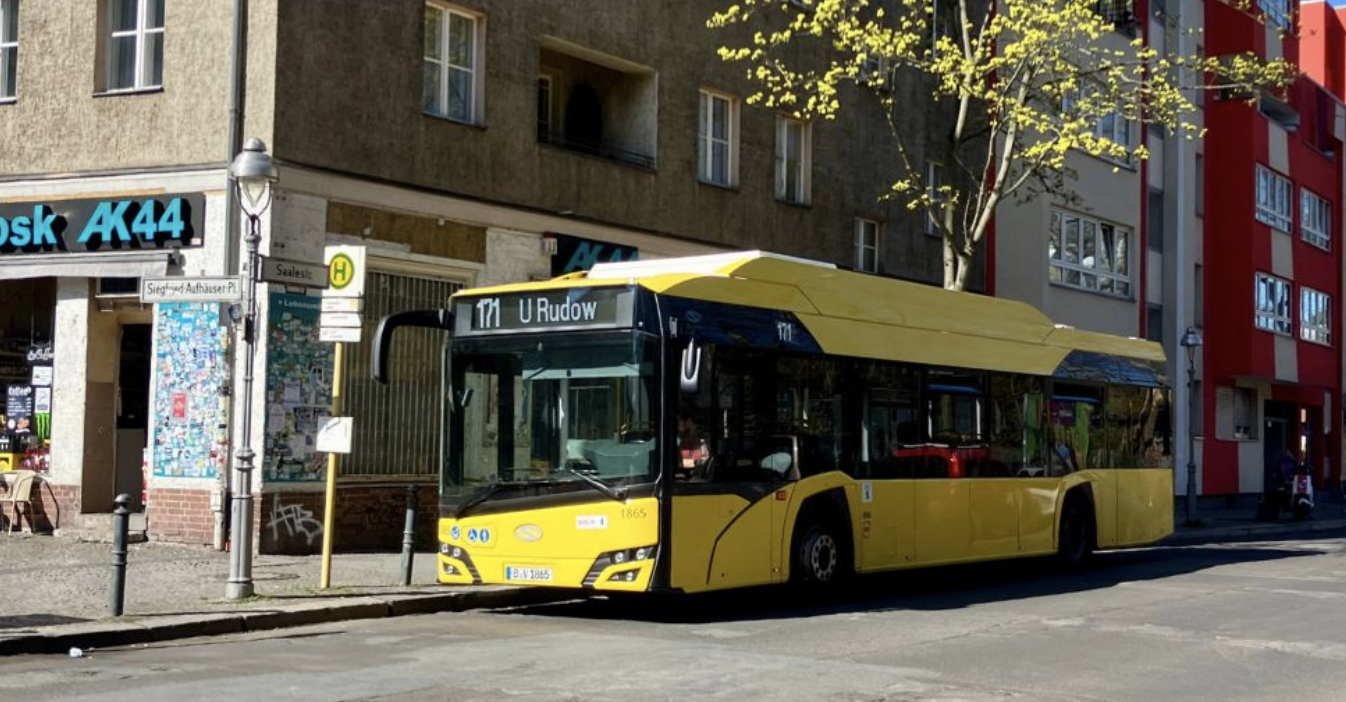
Where are you getting your financial resources?
We use a mix of national and local funding. We would have liked to have the national funding remain at a higher level. Now we are looking very closely at the negotiations between the coalition partners in the newly elected government, because we received signals from the Ministry of Transport that there might still be funding for infrastructure.
Could you quantify the amount of money required for the electrification project?
We are looking at replacing 1,500 buses, transforming 7 old depots, and building two new ones. We are in the billion-euro range.
We have secured funding that will lead us to deploy 500 e-buses by 2027 — it’s about 30 percent of our fleet. These buses have already been tendered, we did a framework contract. We still haven’t secured full funding for the remaining part of the electrification, although there’s the commitment of the federal state of Berlin to fulfill it, as it’s their aim as well. But we cannot say how fast it will be, as funding is not secured yet
Daniel Hesse, Head of Technology and Innovation, BVG
In an interview we had in 2020, BVG spokesperson Jannes Schwentu stated: “we expect a growth from now around 1,500 to approximately 1,900 buses by the year 2030. The reason for this growth, however, is not solely the electrification but also our projected increase in bus traffic”. Is this still valid?
On one side, we are still planning to increase our offering to the public. On the other hand, we are currently facing a shortage of drivers. Therefore, this number should be considered more as a long-term aim. We do not expect a significant increase in the fleet due to the electrification any more.
Is such a figure written down in the contract between BVG and the PTA?
Yes, but there is a revision happening this year.
Charging paradigms in Berlin
Let’s point to the infrastructure topic. BVG recently mentioned that 36 terminal stops are to be converted with a new charging concept. Can you elaborate more on this? Which is your charging philosophy?
Our strategy aims at combining two quite proven charging methods, namely depot charging and opportunity charging with a pantograph. We equipped the 200 line with charging points at the two terminus and it was a good experience. Currently, the main part of our fleet is charged in the depot overnight, but we realized that if we look at the options that we have in terms of how many buses can be charged at the same time, we have some restrictions. On the other hand, looking at opportunity charging out of the depot, we’d rather not be too dependent on chargers located in places of the cities where there could be traffic or disruptions such as road closures…
For safety’s sake, in order to provide reliable operations, we believe the best option is to charge in both ways. We have larger batteries on our buses compared to the ones we’d use for just opportunity-charged buses. Plus, using pantograph, automation processes can be put in place. That’s why we are building our depots in a way that we can use pantograph technology in place of plug-in charging in a future-proof approach.
Autonomous driving enables you to rethink the whole question about vehicle size. Right now, one of the main drivers of vehicle size is the fact that they are driven by a person, which has a cost. Although we will always need other people whose number is not known yet, a wider use of smaller vehicles might become possible. However, I don’t think it will ever make sense to send many small vehicles on routes where we know the demand is made of hundreds and hundreds of people.
Daniel Hesse, Head of Technology and Innovation, BVG
Long story short, I forecast two changes: the vehicle size might change and also the mix in general. It is expected that we will need fewer big vehicles.
Therefore you are buying buses with large batteries and at the same time equipped for pantograph charging. Which fast charging technology do you use?
Bottom-up. It was a lively debate in the company. If you only do opportunity charging, you would probably end up thinking that having the moving part on the infrastructure would be the cheaper and more effective way. But if you want to take it one step further and be ready for automation, then you are probably looking to have pantograph chargers in the depots for every bus. In this case, each of these charging points is much more expensive than adding the option of the pantograph on the roof of the bus. Another consideration is that we’d rather have all the intelligent and moving parts on one system, i.e. the bus, and the solid and simple infrastructure on the other side. In terms of reliability, the chargers would then be less dependent on software upgrades and similar stuff.
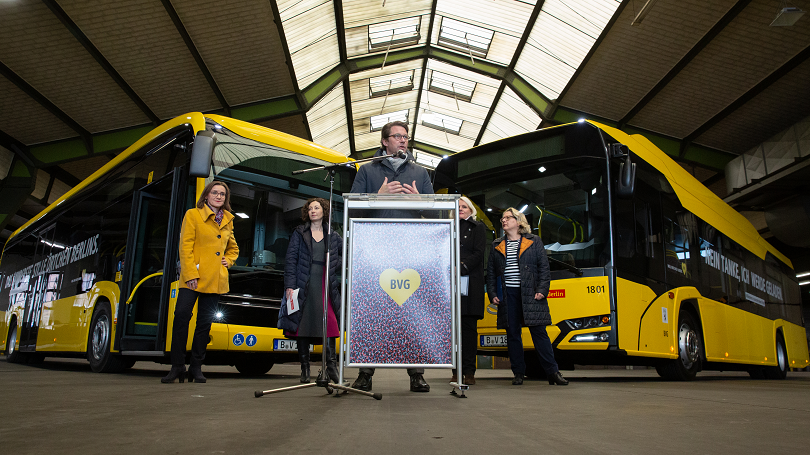
Autonomous driving is coming
This implies that you are ‘betting’ that the next generation of buses will be autonomously driven…
We do not know the timing, but we are hoping to introduce this technology as fast as possible – if and where it makes sense.
How do you see the ‘match’ between driverless technology and the concept of the bus? Renderings of a future world are filled with small self-driven shuttles…
Autonomous driving enables you to rethink the whole question about vehicle size. Right now, one of the main drivers of vehicle size is the fact that they are driven by a person, which has a cost. Although we will always need other people whose number is not known yet, a wider use of smaller vehicles might become possible. However, I don’t think it will ever make sense to send many small vehicles on routes where we know the demand is made of hundreds and hundreds of people.
Long story short, I forecast two changes: the vehicle size might change and also the mix in general. It is expected that we will need fewer big vehicles.
You are already involved in a few projects on autonomous driving…
Yes, together with our project partners TU Berlin and IKEM we are currently launching a new project called NoWeL4. The goal is to introduce Level 4 autonomous driving in Berlin’s northwest. We are also teaming up with Moia and Volkswagen for this. We will be able to share more details soon.
What are the main barriers at the moment? Regulations, technology, funding…
The first thing is that we need the permit for Level 4, it would open the door to the possibility of scaling up. In our current projects, we are trying to just understand who has to play which role in the system. Before scaling up, we have to understand what we will do ourselves in the future and what will be done by other players. The main topic is that we don’t have the best environment right now for scaling-up yet. We are thinking as many puzzle pieces right now, every operator making its own small projects. We need some combination of policies to give the market a boost in one direction, channeling all the efforts towards a few players that really have the chance to succeed in the race. We are lagging behind China and the USA and we already have a gap to cover.
Huge investments are needed, and more than one player already stopped as the business case is not there
There is a huge amount of money to be invested and some of the companies actually started to invest in all these topics at a rather late stage. They were late in e-mobility and also in autonomous driving, so they had to give up on one of them.
What can an operator do in order to stimulate this environment?
We should first cooperate and avoid everyone coming out with their own idea about how these vehicles should look like. We should really work together in terms of what we need in terms of backup systems and how we organize the processes. Financial support is also needed — we need some European signal stating that this is an important topic that deserves investments.

